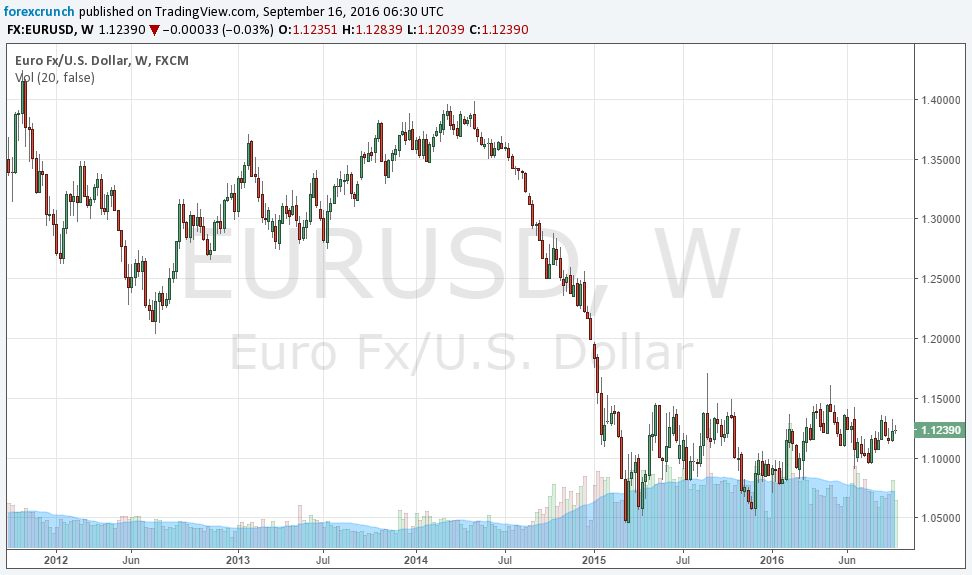At least in terms of its price action, the behavior of both currencies pairs has switched positions. EUR/USD is not what it used to be, frustrating many traders.
Here are details of this change, ones that still leave us hopeful for a reversal.
USD/JPY – from boredom to action
USD/JPY has been a boring currency pair for a very long time. Until late 2012, the pair traded in narrow ranges around the 80 level. From time to time, it would spike, making a massive breakout (at least when comparing to the boring water-grinding behavior), but would settle down shortly after.
Since Shinzo Abe came to power in Japan, the yen has weakened quite a bit. Yet also in the following year, the bigger movements were also often accompanied by long periods of boredom.
USD/JPY did move quite a bit, topping 125 at one point on subsequent easing and eventually got rid of the quiet periods. Ranges became wider and breakouts more common. The move happened during 2015 and volatility extended in 2016.
The safe-haven nature of the pair battled the desire for a weaker yen by the Japanese authorities. The battle resulted in higher volatility rather than a war in the trenches.
Dollar/yen is far off the highs, holding above 100 but reaching 104 in recent months. Even this calm period consists of bigger moves. Here is a weekly chart of the pair. Note the move from long periods of boredom with occasional breakouts to the current situation of higher volatility:

EUR/USD – fell asleep?
EUR/USD was not always the world’s most volatile pair, but its behavior has changed for the worse. The world’s most popular currency pair had its share of volatility around the euro-zone debt crises of 2010-2012, but after ECB President Mario Draghi announced he will do “whatever it takes” in the summer of 2012, things began stabilizing.
2013 was a relatively calm year and a lack of drive was also seen in early 2014. Things totally changed as monetary policy divergence pushed the pair to a precipitous fall since mid-2014 all the way to the bottom in early 2015. Last year saw a better-defined range, but volatility remained relatively high.
2016 is when things became worse. The slowdown in volatility goes hand in hand with the boredom that characterizes Draghi’s recent press conferences.
The highly anticipated “Draghi show” is a slow drag, and so is EUR/USD volatility.
Will this change? There are reasons to be hopeful. First and foremost, even if this current behavior stays with us, it should include some spikes. This was seen around Brexit – a fall of 500 pips overnight.
Secondly, and as we’ve seen with USD/JPY, nothing lasts forever. Everything could change.
Here is the weekly chart of EUR/USD, for the exact same period. Note the very short candles on the right-hand-side of the chart, the recent frustrating behavior.

More: Low Pressure, Lower Volatility Forex Trading
